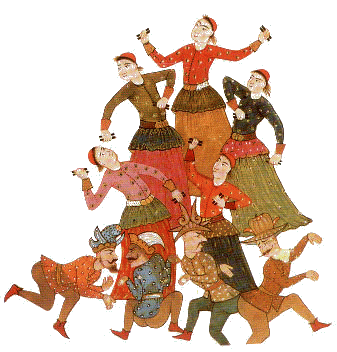
The following items represent museum's outstanding group of Islamic miniature
paintings, found in illustrated copies of classic works and as surviving
fragments pasted or bound into albums in the former royal libraries.
The first examples of the Ottoman miniature paintings were
produced under the patronage of Fatih Sultan Mehmet
(Mehmet the Conqueror ) in mid 15th century.
An important feature of the Ottoman miniatures is the
realistic portrayal of actual events while
adhering to the traditional
rules of Islamic art.
Topkapi's priceless collection encompasses not only Ottoman works but also
those of many different dynasties and regions within the Islamic world,
including Baghdad and Mosul in Mesopotamia (13th century); Il-Khanid Tabriz
and Muzaffarid Shiraz (14th century); and Akkoyunlu Shiraz and Tabriz, Timurid
Herat, and Safavid Shiraz and Tabriz (15th century).
Included are scientific works such as Dioscorides' Materia Medica;
romances such as the fables of Khalila and Dimna; the
Early Islamic Illustrations
Secular illustrations and Persian Painting
Mongols and Painting under the Jala'ir
Painting in Persia under the Timurids
China, chinoiserie and Painting in Turkestan under the Timurids
Siyah Kalem School
The Uzbeks and the Safavids
Book Illustration under the Ottomans
Turkish Miniatures in the 16th Century - Ministary of foreign affairs
Turkish -Islamic Art, The Miniatures of the Zubdat Al- Tawarikh
Turkish -Islamic Art, Matrakci Nasuh